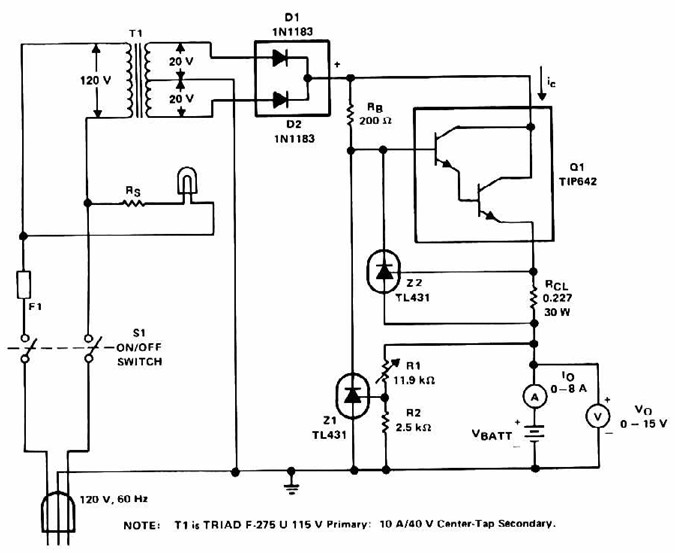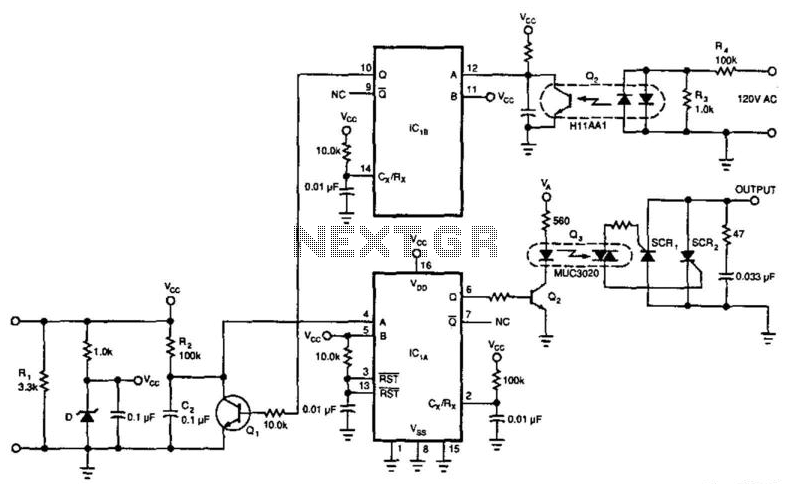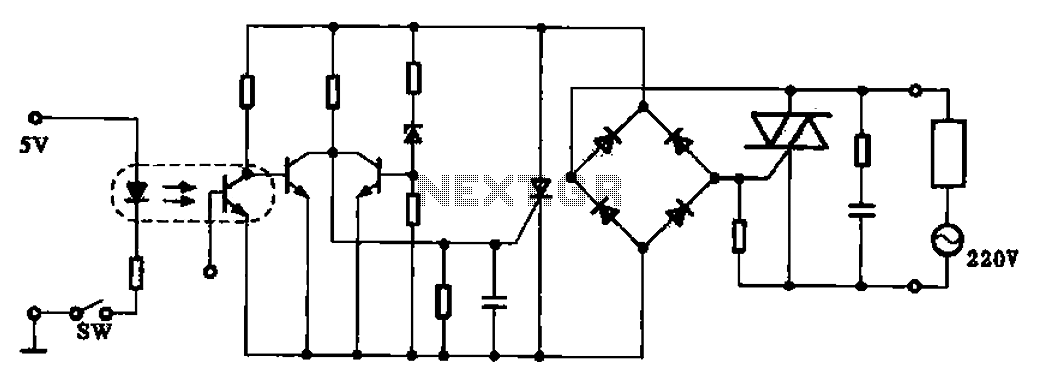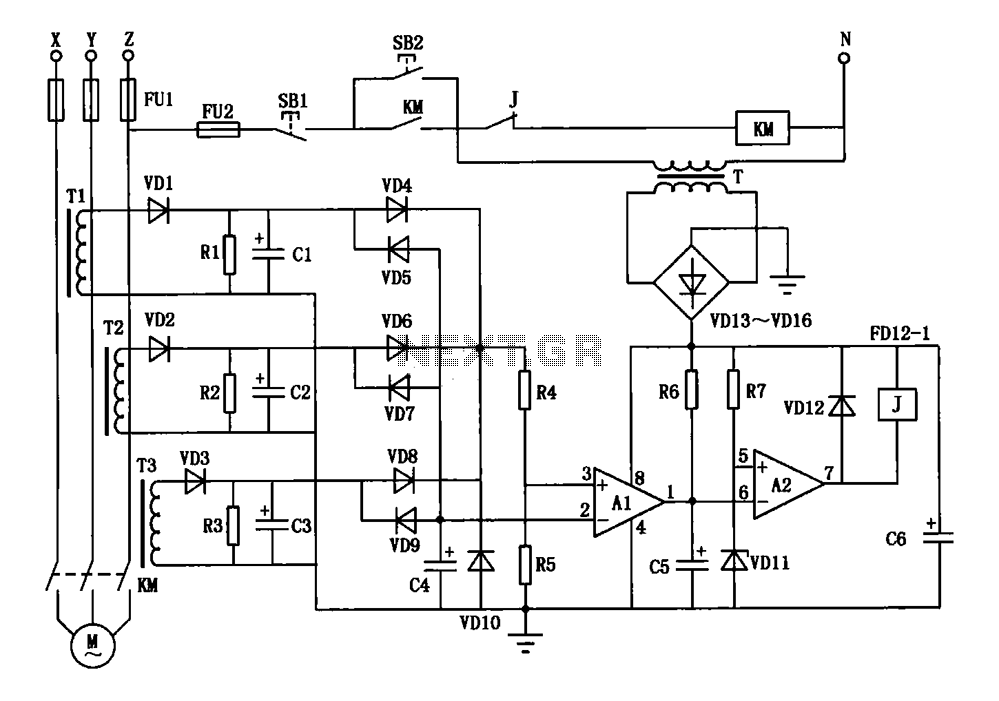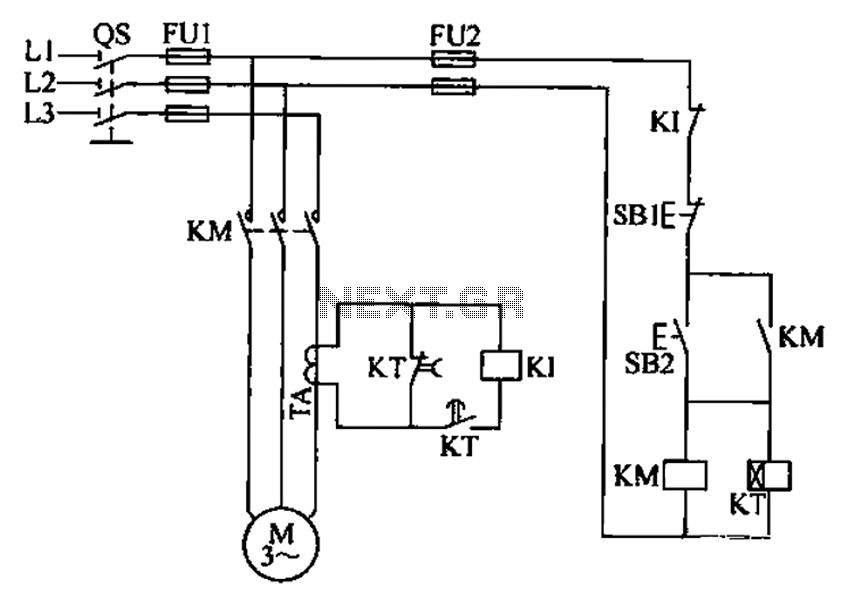
1-Ma Current Sink
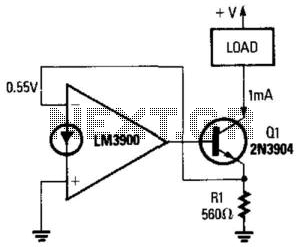
A fixed current flows through any load that is connected between the positive supply and Q1's collector. The non-inverting terminal of the operational amplifier is grounded, and negative feedback flows between the output of the circuit (Q1's emitter) and the inverting terminal. The voltage across R1 is thus equal to the voltage at the inverting terminal (approximately 0.55 V), resulting in a fixed current of about 1 mA flowing through the load, Q1's emitter, and R1.
In this circuit configuration, the operational amplifier (op-amp) is utilized to maintain a constant current through a load connected to the collector of transistor Q1. The grounding of the non-inverting terminal establishes a reference point for the op-amp, ensuring that it operates in a linear region. The negative feedback path from the emitter of Q1 to the inverting terminal of the op-amp is crucial for regulating the output voltage and, consequently, the current flowing through the load.
The voltage across resistor R1, which is connected in series with the load, is monitored to provide feedback to the op-amp. Given that the voltage at the inverting terminal is approximately 0.55 V, this indicates that the op-amp is configured to maintain a specific output voltage level. The relationship between the voltage across R1 and the current through it can be described using Ohm's Law, where the current I through R1 can be expressed as I = V/R. In this case, with a fixed voltage of approximately 0.55 V, and assuming R1 is appropriately sized, a constant current of about 1 mA is established.
This configuration is commonly used in applications where a stable current is required for driving loads such as LEDs, sensors, or other electronic components. The stability of the current is a result of the feedback mechanism, which continuously adjusts the output of the op-amp to counteract any variations in load conditions, ensuring reliable operation across different scenarios. The choice of components, including the characteristics of Q1 and R1, plays a significant role in determining the overall performance and efficiency of the circuit. A fixed current flows through any load that is connected between the positive supply and Ql"s collector. The noninverting terminal of the op amp is grounded, and negative feedback flows between the output of the circuit (Ql"s emitter) and the inverting terminal. The voltage across Rl is thus equal to the voltage at the inverting terminal (approximately 0.55 V), so a fixed current of about 1 mA flows through the load, Ql"s emitter, and Rl.
🔗 External reference
In this circuit configuration, the operational amplifier (op-amp) is utilized to maintain a constant current through a load connected to the collector of transistor Q1. The grounding of the non-inverting terminal establishes a reference point for the op-amp, ensuring that it operates in a linear region. The negative feedback path from the emitter of Q1 to the inverting terminal of the op-amp is crucial for regulating the output voltage and, consequently, the current flowing through the load.
The voltage across resistor R1, which is connected in series with the load, is monitored to provide feedback to the op-amp. Given that the voltage at the inverting terminal is approximately 0.55 V, this indicates that the op-amp is configured to maintain a specific output voltage level. The relationship between the voltage across R1 and the current through it can be described using Ohm's Law, where the current I through R1 can be expressed as I = V/R. In this case, with a fixed voltage of approximately 0.55 V, and assuming R1 is appropriately sized, a constant current of about 1 mA is established.
This configuration is commonly used in applications where a stable current is required for driving loads such as LEDs, sensors, or other electronic components. The stability of the current is a result of the feedback mechanism, which continuously adjusts the output of the op-amp to counteract any variations in load conditions, ensuring reliable operation across different scenarios. The choice of components, including the characteristics of Q1 and R1, plays a significant role in determining the overall performance and efficiency of the circuit. A fixed current flows through any load that is connected between the positive supply and Ql"s collector. The noninverting terminal of the op amp is grounded, and negative feedback flows between the output of the circuit (Ql"s emitter) and the inverting terminal. The voltage across Rl is thus equal to the voltage at the inverting terminal (approximately 0.55 V), so a fixed current of about 1 mA flows through the load, Ql"s emitter, and Rl.
🔗 External reference
